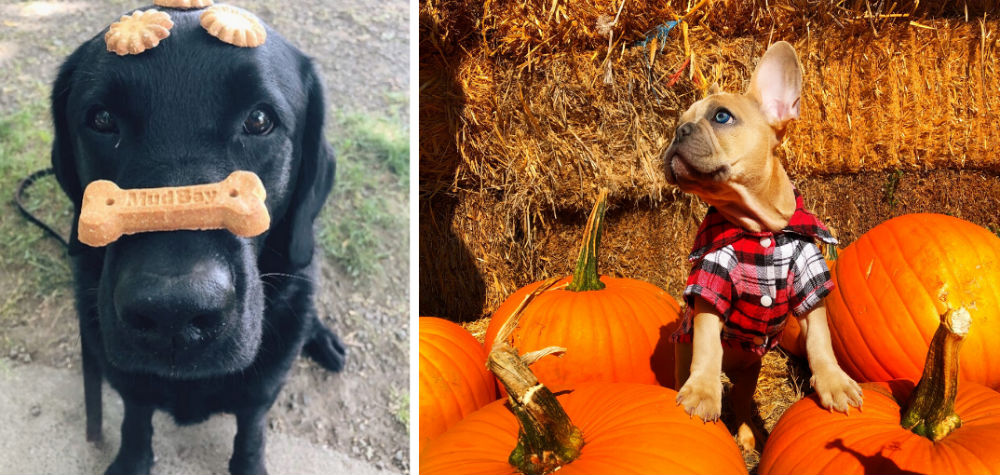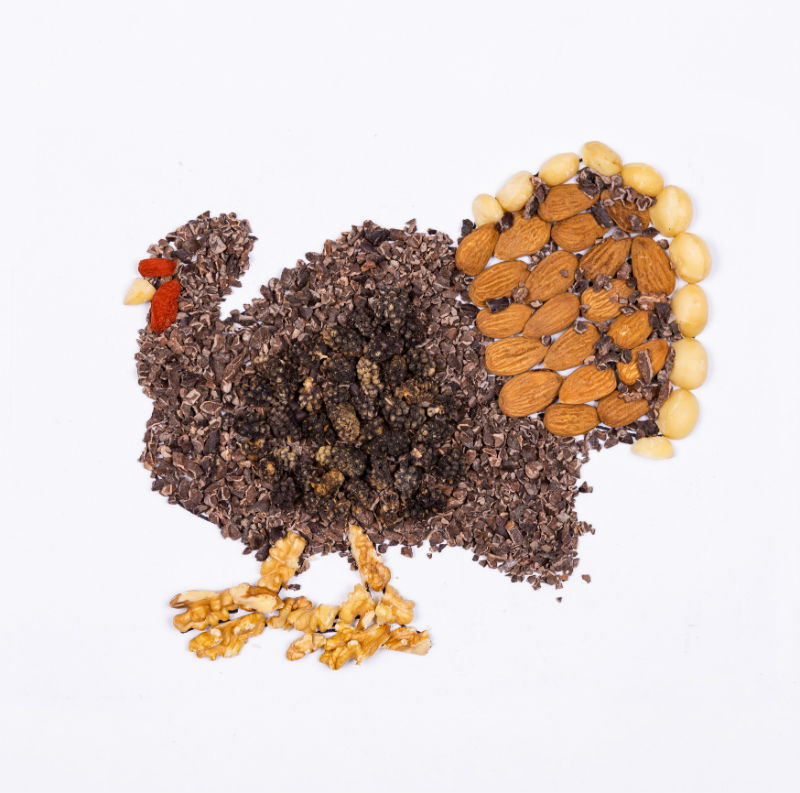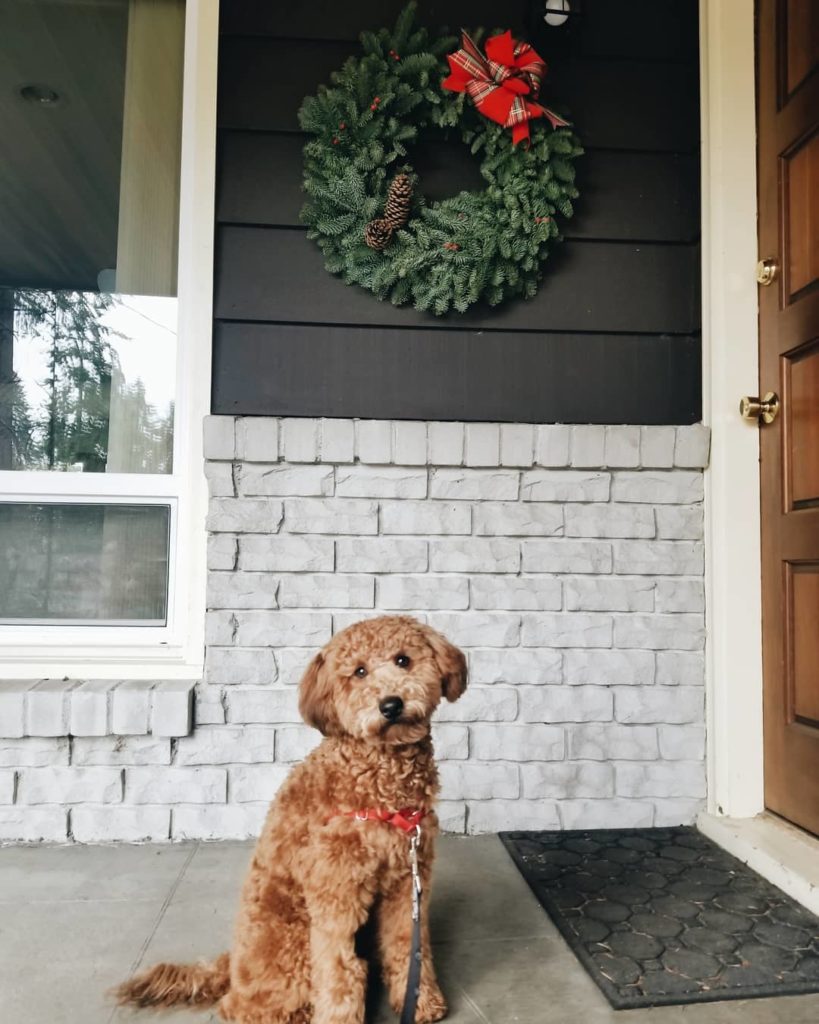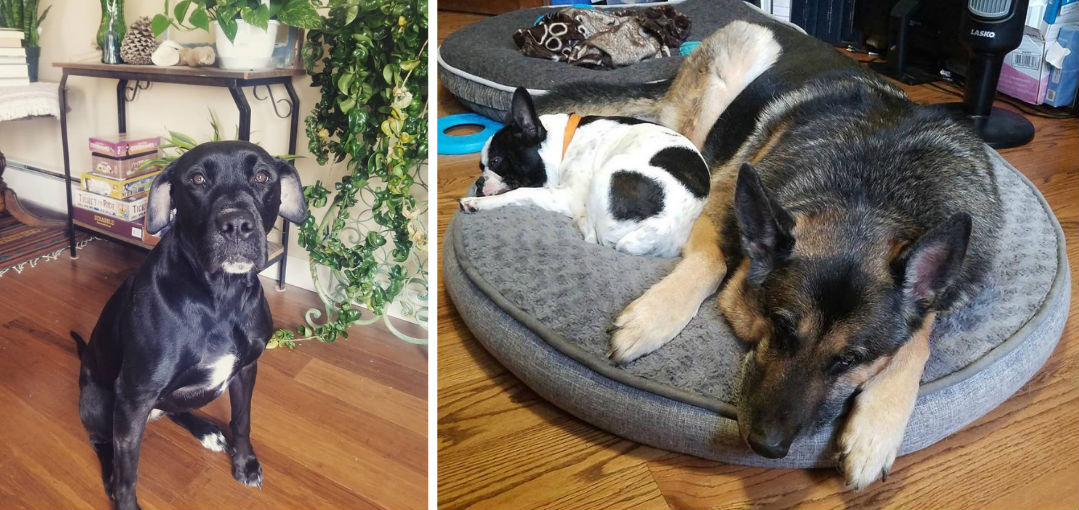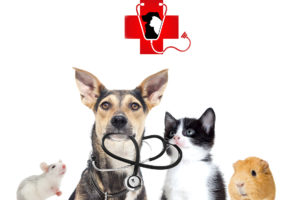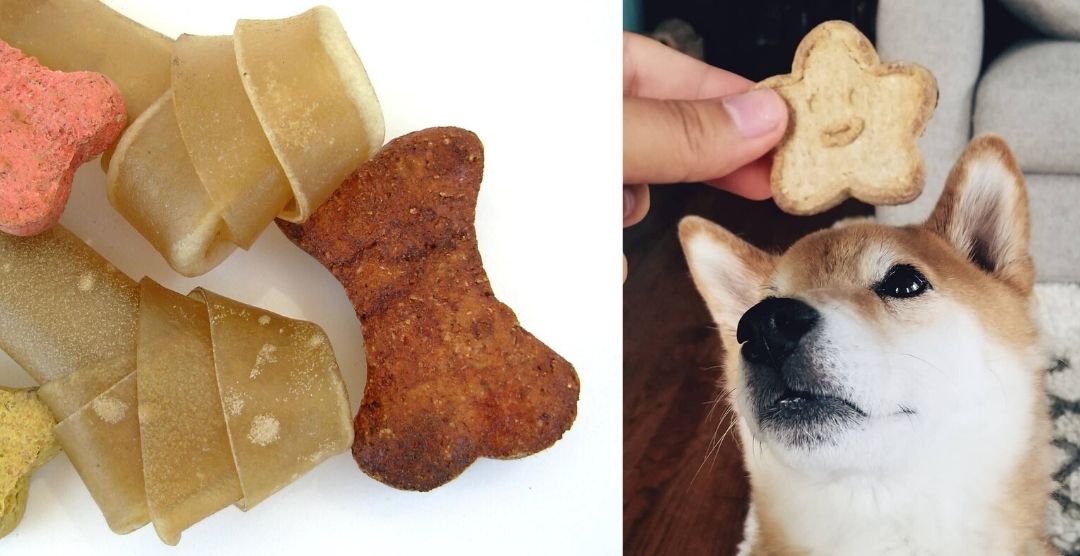
There’s a lot of uncertainty in the world right now. But, amidst all the coronavirus craziness, we at Strut the Pup know at least one thing to be true: social distancing isn’t so bad when you’ve got a furry friend to keep you company. And what better use of all this new-found spare time than to treat your pet to something special?
Just like with human food, homemade dog food offers dog owners control over every ingredient, ensuring pups only consume the healthiest bits and bites possible. With that in mind, we’ve collected a few of our favorite healthy dog treat recipes — all using ingredients you either already have at home, or can easily find in stores today. (No toilet paper required!)
On the list of stay-home activities both you and your pup can enjoy, baking dog treats is a close second … behind taking your dog on a walk, of course. So grab your aprons, roll up your sleeves, and let’s get cookin’!
Mega Healthy Dog Biscuits

Kimberly Killebrew from the cooking blog The Daring Gourmet has outdone herself with these homemade dog treats — they are, in fact, “mega healthy” for your fur-baby.
Each ingredient in these healthy dog biscuits seems to have something to offer: whole grains to help grow good gut bacteria and regulate bowel movements, unsalted seeds for added protein, olive oil to promote healthy skin and coat, fish oil to relieve allergies and joint pain … it’s even been suggested that cinnamon improves a dog’s brain function.
As with all things, it’s important to remember that each of these ingredients is only healthy in moderation. So be sure to use these dog treats as exactly that — a treat, and not an all-the-time sort of thing.
Ingredients
- 2 cups whole wheat flour
- ½ cup old-fashioned oats
- ½ cup wheat germ
- 2 tablespoons unsalted sunflower seeds
- 2 tablespoons flax seeds
- 1 teaspoon ground cinnamon
- ⅓ cup natural unsweetened peanut butter
- ¼ cup coconut oil
- ¼ cup extra virgin olive oil
- 4 high quality fish oil capsules
- 1 tablespoon raw honey
- ½ to ¾ cup water
Directions
- Preheat the oven to 350 degrees F. Line a cookie sheet.
- Combine all the dry ingredients in a large mixing bowl. Add the remaining ingredients, except for the water, squeezing the fish oil from the capsules into the bowl with the other ingredients. Stir the mixture until it resembles coarse sand. Slowly add the water, starting with ½ cup and add more as needed. You want a thick dough that holds together without being too sticky. Use your hands to knead the dough a few times to make sure all the ingredients are incorporated.
- Turn the dough out onto a lightly floured work surface and roll it out to ¼ inch thickness. Use a cookie cutter to cut out biscuits and place them on a lined cookie sheet. Gather up the scraps of dough, roll it out again, and cut out the remaining biscuits.
- Bake for about 40 minutes or until the biscuits are golden and hard. Let cool completely and keep stored in an airtight container. Will keep for several days.
Find the original recipe here: https://www.daringgourmet.com/mega-healthy-dog-biscuits/
Homemade Chicken Jerky Chews

Often the primary source of protein among dog food labels, cooked chicken not only keeps dogs full, but it also builds lean muscle mass, promotes healthy, shiny coats, and supports bone health to boot. In fact, some special doggie diets suggest serving skinless, boneless chicken in place of traditional dog kibble altogether.
Outside of these chews being high in protein, we love this dog treat recipe because it sparks a conversation about dog-friendly seasonings. The three herbs mentioned (parsley, rosemary, and sage) are antimicrobial, anti-inflammatory, and chock-full of antioxidants — the perfect opportunity to spice up your dog’s diet!
Disclaimer: Be sure to use spices in small doses, and double-check the effect on doggos with special conditions, like epilepsy or calcium oxalate stones.
Required Tools
- Dehydrator (but it’s possible to make these chews in the oven, too!)
Ingredients
- 1/2 pounds boneless, skinless chicken breast tenders
- 1/2 cup vegetable oil
- Your choice of dog-friendly seasonings: parsley, rosemary, sage (preferably fresh and chopped very fine)
Directions
- Rinse the chicken breasts and remove any fat, which slows down the dehydrating process and will shorten the jerky’s shelf life.
- Slice the chicken into strips about 1/4- to 1/8-inch thick; slicing with the grain will make the jerky even chewier.
- Coat the strips with oil and seasonings.
- Place the strips on the dehydrator tray, spacing them evenly; make sure they do not touch. The drying process depends on adequate airflow between the strips.
- Put the tray in the dehydrator, turn it on and set the temperature for 140 degrees.
It will probably take between 3 and 12 hours for the strips to fully dry, depending on how thick you cut them and the exact temperature of your dehydrator. After the first hour, start checking the strips on an hourly basis. To determine the dryness level, remove one strip from the dehydrator, cut into it with a sharp knife and examine the inside. When the meat is completely dried, you won’t see any moisture and it will be the same color throughout. If it needs more time, put it back in for another hour. As it gets closer to being finished, check every half hour.
When your chicken jerky is done, store it in air-tight containers; zip-lock bags work great for this. Refrigerate the containers for an even longer shelf life.
Original recipe here: https://thebark.com/content/homemade-chicken-jerky-sweet-potato-chews
Simple Frozen Yogurt Dog Treats
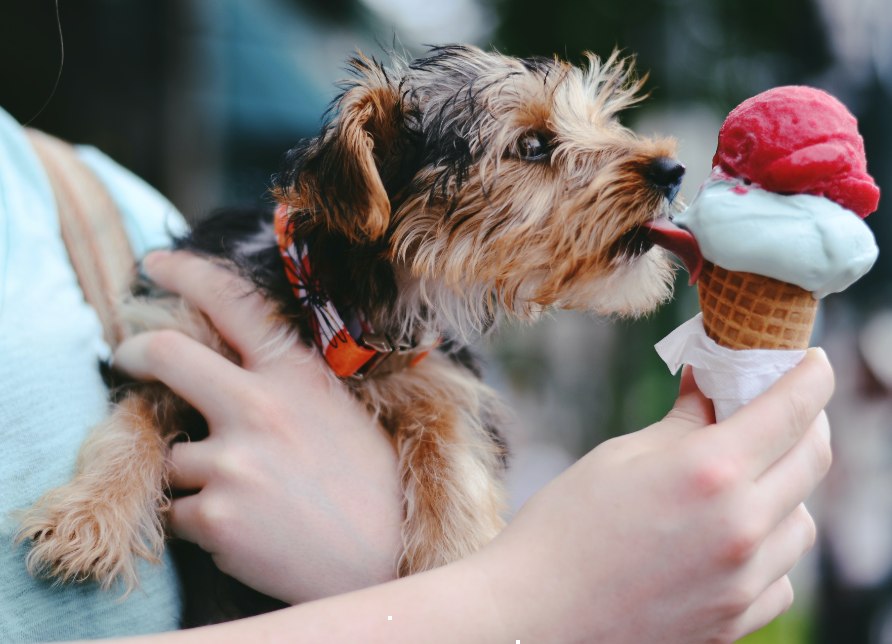
Full disclosure: while these homemade dog treats definitely have something to offer, these yogurt treats are mayyyybe not the healthiest. As summer rolls around, however, we wanted to include an easy dog treat that can help your pup cool off!
Similar to humans, dogs aren’t really made to digest lactose once they’re grown. But, also similar to humans, the probiotic properties in plain Greek yogurt can support your dog’s digestive health. The recipe says flavored yogurt is okay, but we’d recommend sticking to the plain stuff to keep sugar levels in check and avoid any yogurts sweetened with xylitol, an artificial sweetener toxic to dogs. Double-check the peanut butter for xylitol, too!
One thing we especially love about this recipe? The banana! Bananas are high in potassium, vitamin B6, vitamin C, fiber, magnesium — all reasons leading some veterinarians to recommend bananas as dog treats instead of manufactured alternatives.
Ingredients
- 4 cups yogurt (plain and non-fat)
- ½ cup creamy peanut butter
- 2 tablespoons honey
- 1 ripe banana, mashed
Directions
- Melt peanut butter in microwave for about 30 seconds.
- Place all of the ingredients into a blender, mixer or food processor and mix well (until smooth).
- Pour into ice cube trays or Popsicle trays.
- Freeze until firm.
- Pop out of the tray (you’ll need a knife) and let your dog enjoy this frozen treat!
Original recipe here: https://thebark.com/content/simple-frozen-yogurt-treats
Superfood Gravy

Mmm … gravy. A staple during the holidays, gravy adds a little somethin’ somethin’ to any dish. And — while the gravy we use for our mashed potatoes isn’t exactly beneficial to our health — this simple homemade dog gravy offers several healthy ingredients: ground turkey as a source of lean protein, frozen peas to support eye, skin, and heart health, and nutrient-rich liver to aid in all kinds of necessary functions.
Though the recipe doesn’t specify which type of oil to use, we recommend using olive oil to promote a healthy coat (and avoid GMOs found in some canola oils). Throw a dash of some of those dog-friendly seasonings in there, and you’ve got yourself a tasty addition to your pup’s next meal!
Ingredients
- 1 Tbsp oil
- 1 lb (approx 500 g) ground turkey
- 4 oz (100 g) liver
- ¼ cup frozen peas
- 3 cups water
Directions
- Heat the oil in a frying pan and brown the ground turkey and liver.
- Once the meats are browned, add the frozen peas then pour in 3 cups of water. Put a lid on the pan and leave to simmer for 30 minutes.
- Remove the pan from the heat and leave to cool slightly then place the mixture in a food processor or blender and blitz until smooth. It may still look a bit grainy once you have done this, but your dog won’t mind! Frozen in an ice-cube tray, this gravy will keep for up to two months. Warm to room temperature before feeding.
Original recipe here: https://moderndogmagazine.com/articles/diy-eat-superfood-gravy/35627
Homemade Dog Treats, Healthy in Moderation
Watch out for too much of a good thing! When feeding your dog, it’s important to refer back to these three rules:
- Thought: Think about how each ingredient will affect your unique dog, especially for those with special conditions. We recommend asking your veterinarian before introducing your dog to new foods and ingredients, just in case.
- Moderation: Only share food with your dog in moderation — save it for special occasions!
- Balance: Consider how the food you’re sharing fits into your dog’s well-balanced diet.
Stay safe out there, friends!


